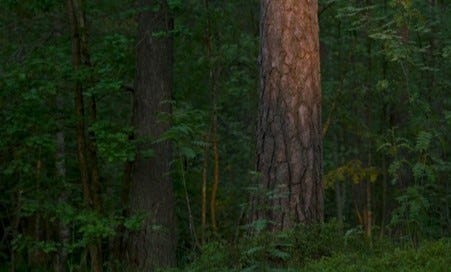Life is wild and natural. But anyone who spends time in nature knows it’s not unpredictable. Sure, there are surprises, highlights to a greater background of deeply familiar patterns.
Have you spent time in the forest? The trees, while similar in form, are an organic array of various heights. Go and measure the height of each tree. Enter this data into a spreadsheet and calculate the average. You will arrive at a single number. But how many trees will have this exact height? Look at the number. Look at the trees. Myriad layers of pulsating, fertile life reduced to a single figure.
Sure, you can make a number out of a forest, but you can’t make a forest out of a number. Fractal geometry has a good shot at it. Yet a computer-generated image is nothing like a real forest. But wait, we now have artificial intelligence (AI)—ask it to create a forest. Voilà!
But that’s a surface appearance. Do you see the algorithms, the formulas, the swathes of scraped data, buzzing through computer chips to feign the likeness of a forest? Go deeper. Do you see the history of computer science, mathematics, engineering, and art underlying this technology? Going back decades, then over hundreds, nay thousands, of years of innovation and development, going all the back way to basic geometrical discoveries, the invention (or discovery) of numbers, back to the birthing of the rational human mind. Without this legacy, today’s technologies would not be possible.
The human mind is so incredible, dwelling in ancient times in the heart of the forest. We have now grown to the point where we can conjure forests on a screen at will. Is this not wonderful?
Yes, technology is progressing, but it’s not the same as life. Will it one day become an equivalent? Will the virtual forest overtake the real one? We may not live to know.
The solitary bird calls rhythmically in the real forests of today. Perhaps you are walking on the winding tracks. A flower stands out, unexpected, amid a naturally ordered background of foliage and sticks, beneath the wind-swaying trees that breathe symbiotically with you. Life has its own wild algorithms.
Now to writing. Does the forest mimic writing, or writing the forest? Does an AI-generated forest parallel AI-generated writing? What of real writing and a real forest? How real, how natural is your writing?
If the bark on a tree is rough to the touch and has a pine aroma, and within it live a thousand tiny creatures, giants of hidden microscopic worlds of which we barely know—how is this a metaphor for the practice of writing? The forest: all the rhythmic equilibrium of the cyclical wild, funnelled through your pen or typing fingers.
Tell me of a poem you once wrote. Compare this to an AI poem you prompted. Which is best? In not recognising poetry’s contribution to our humanity, and humanity’s contribution to poetry, we are lost. The same applies for writing more broadly, even while AI is incredible.
Writing is a deeply human process.






